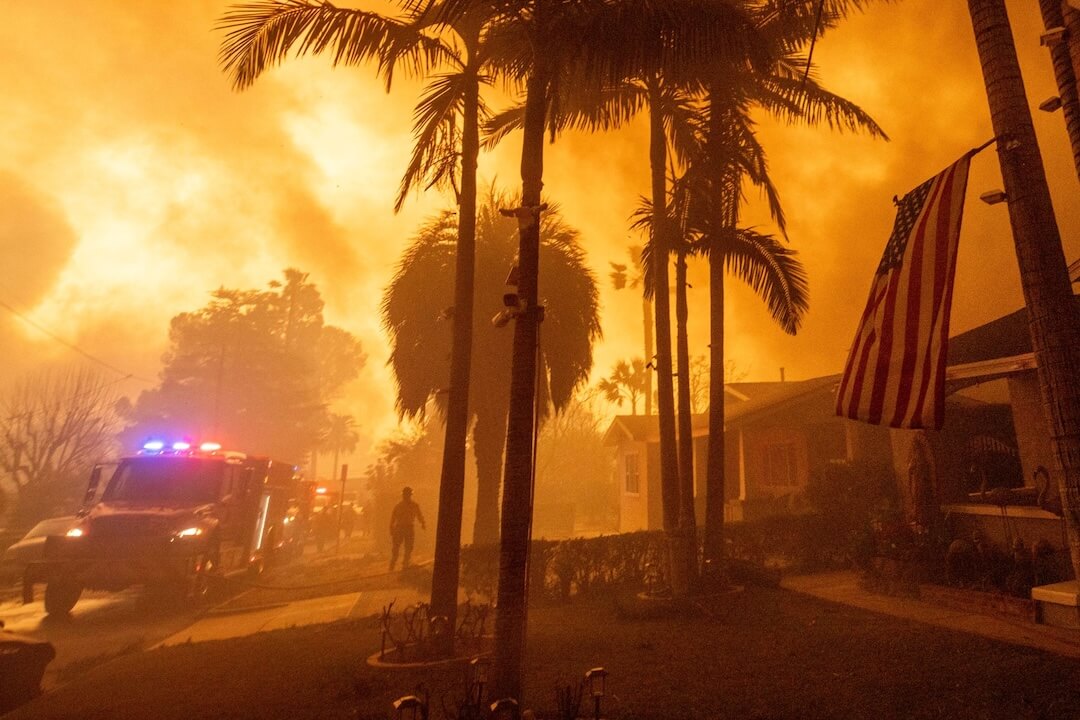Our impressions of this week (May 1-5, 2006) in news coverage:
- Rick Edmonds on the behind-the-scenes chatter at the ASNE convention
- Casey Frechette on the high’s and low’s of Moussaoui’s trial coverage
- David Shedden highlights current events and takes a look back at Kent State and the launch of NPR
Industry Shake-ups Bring Mixed Feelings to ASNE Convention
By Rick Edmonds
Writer/Researcher
People are still talking about last week’s American Society of Newspaper Editors convention in Seattle. This includes an eye-of-the-beholder split about whether the overall effect was upbeat or a bummer. My sense is that it depends on which convention you’re talking about — the proceedings on the floor, which were optimistic and forward-looking, or the conversations in the hall, where complaint and anxiety were more likely to be aired out.
In my bailiwick — empirical research on the industry — there was some modestly good news. The annual census of professional newsroom jobs showed a loss of about 600 in 2005, not the 1,200-plus that I and other watchers of this annual indicator had predicted. That 600 is roughly equal to the announced job cuts of 2005, mostly at large metro papers. The number also suggested that smaller papers did much better, that many papers held their staffs even and that there may have been unannounced pockets of modest growth. ASNE also took a shot at measuring employment at 11 free-distribution dailies and estimated more than 1,000 professional jobs in that sector. It also remains unclear whether the census includes the growing number of editorial jobs in separate online divisions of newspapers. Add it up and, with the prominent exception of metro papers like those in Philadelphia and San Jose, it appears that the industry may be redistributing, rather than shrinking the news workforce.
Besides adding marquee value, Bill Gates of Microsoft and Howard Schultz of Starbucks had worthwhile things to say at the convention. Techies told me there was less news than met the eye in Gates’ demonstration of a soon-to-be-released newspaper-reading product, enabling easier, better-organized reading onscreen (and offline, should you wish). Still, I was taken aback when both Gates and his New York Times collaborators said that the current state of Web design (where so many papers are focusing hard-charging growth efforts) is no great shakes. It was another reminder of the moving-target nature of online content and display. Today’s best may look quaint within a few years.
As for Schultz, he claimed to know nothing in particular about newspapers, but his opening anecdote about how good brands can be “fractured” made me wonder. He reached into a manila envelope and produced a box of Raisinets he said he had purchased on a recent trip to the movies with his daughter. It looked like a good-sized box of candy and even came with a cellophane window through which you could glimpse the product. But once he opened the package, he found the Raisinets themselves wrapped in a second cellophane bag — a lot smaller than the dimensions of the box. Hmmmm — looks like a real newspaper, but once you dig in, there is not much there — sound like any of the products of our industry?
Moussaoui Coverage Proves a Balancing Act for the Media
By Casey Frechette
Interactive Learning Producer
Following a nearly two-month trial replete with unexpected revelations and bizarre antics, it’s been interesting to track coverage of the Moussaoui sentencing verdict. We’ve seen a well-crafted mix of trial timelines, historical background, official statements, family reactions and descriptions of courtroom proceedings. The Washington Post produced a quality article, seamlessly weaving firsthand accounts of trial milestones with appropriate background and contextual information. And I found the BBC’s blend of trial documents, analysis, multimedia, related stories and reader comments particularly informative. With so much supplemental content, the line separating journalism and education begins to blur, though this may not be such a bad thing.
In some cases, though, an overly eager spotlight on Moussaoui’s courtroom outbursts undermined otherwise even-handed coverage. In several instances, the “America, you lost… I won!” quote appeared in a story’s deck; in others, the quote was the headline. These stories certainly can’t be charged with inaccuracy — the quotes are precise, and in some ways touch on key themes in the trial. A perfect example is the defense’s and prosecution’s differing views on how to serve justice best, despite their agreement on Moussaoui’s guilt.
The issue here is one of placement; leading into a story with inflammatory comments makes it difficult to give those words context, while also setting the stage for readers and viewers to approach a story with a particular mindset. In this case, focusing on Moussaoui’s taunts, especially in a headline, makes a subtle but powerful value judgment about the jury’s decision. The result pushes coverage beyond reporting or analysis, and into the realm of commentary.
Then and Now: Media Moments that Made an Impact
By David Shedden
Library Director
Monday, May 1:
Thousands attended rallies across the U.S. to protest the violence in Darfur. Here is a story from the Richmond (Va.) Times-Dispatch:
A prayer for DarfurTuesday, May 2:
WASHINGTON — Ten years ago, Apajok Deng was in a refugee camp in Kenya after fleeing civil war-ravaged Sudan in eastern Africa. Yesterday, she stood in front of the U.S. Capitol, surrounded by tens of thousands of demonstrators calling for the international community to help her native country.
“I’m really grateful” for the large crowd, said Deng, 21, who relocated to Richmond about five years ago when a Catholic organization sponsored her move to the U.S. “If something changes, that would be good. We need to save lives.”
The “Day Without Immigrants” was front-page news Tuesday. The Associated Press reports:
Boycott’s Economic Impact Evident, MixedWednesday, May 3:
Far from the boisterous streets where hundreds of thousands of illegal immigrants and their supporters marched Monday, many of the restaurants, factories and construction sites they boycotted stood silent.
Kitchens that normally serve food were empty. Meat-processing plants came to a halt. Fields were barren of workers. Truckers avoided the nation’s largest shipping port, and tens of thousands of students skipped school.
Despite divisions over whether “A Day Without an Immigrant” sent the right message to lawmakers mulling reforms to federal law, the impact of the economic boycott was evident, though hardly uniform, at workplaces nationwide.
35 years ago today:
On May 3, 1971, the National Public Radio news program, “All Things Considered,” began broadcasting on more than 90 stations across the country. The first “ATC” hosts were Susan Stamberg and Bob Edwards.
In 1967, the Public Broadcasting Act was passed by the U.S. Congress. This created the Corporation for Public Broadcasting, which organized and financed National Public Radio and television’s Public Broadcasting System. NPR was incorporated in 1970 and began transmitting programs on April 19, 1971.
NPR repeated the “All Things Considered” format when it started “Morning Edition” in 1979 and “Weekend Edition” in 1985.
Thursday, May 4:
36 years ago today:
On May 4, 1970, the news media reported that four people were killed at Kent State University when members of the Ohio National Guard shot at crowds protesting the American invasion of Cambodia. John Paul Filo of the Valley Daily News of Tarentum, Pa. and the Daily Dispatch of New Kensington, Pa. earned a Pulitzer for his photo coverage of the tragedy. The staff of the Akron Beacon Journal was also awarded a Pulitzer Prize for its reporting. Here is an excerpt:
Four persons were killed and at least 11 others shot as National Guardsmen fired into a group of rock-throwing protesters at Kent State University today. Three of the dead were tentatively identified as William Schneider, Jeffrey Miller, and Allison Krause. The fourth was an unidentified girl. …Friday, May 5:
…Gunshots rang out about 12:30 p.m., half an hour after Guardsmen fired tear gas into a crowd of 500 on the Commons behind the university administration offices. Demonstrators hurled rocks and tear gas grenades back as they scattered … an eyewitness to the shooting, said the gunshots were fired after one student hurled a rock as Guardsmen were turning away after clearing the Commons. ‘One section of the Guard turned around and fired and then all the Guardsmen turned and fired,’ he said. According to the witness, some of the Guardsmen were firing in the air while others were firing straight ahead.
Each weekday, Poynter highlights the front page of a newspaper somewhere in the world. You can view the current ones at Page One Today / May.





